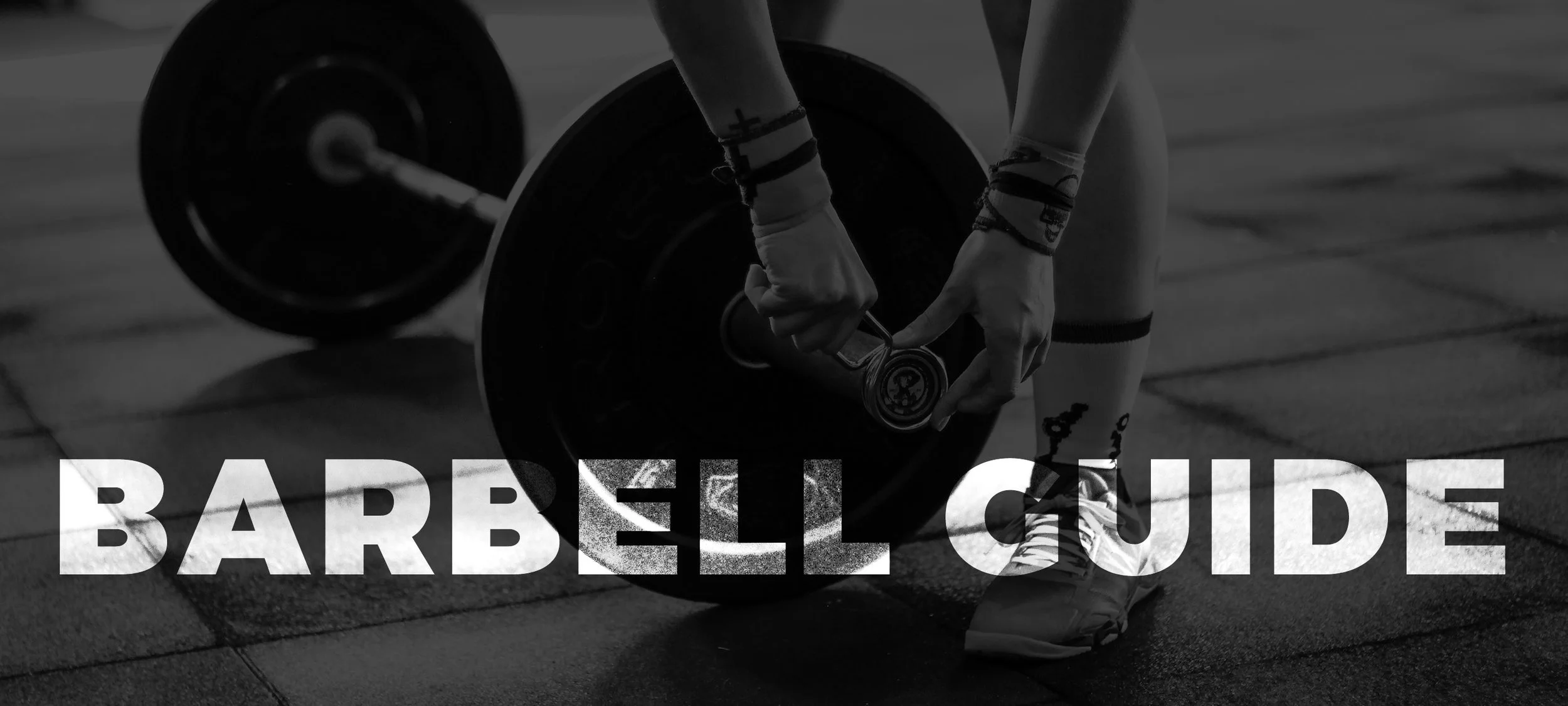Guide to Barbell Weights, Lengths, and Types
Do you ever step in the gym and feel a little lost when it comes to barbell weights?
That was definitely me when I joined my first gym with free barbells. All of a sudden, I didn’t know my lifting weights anymore. I went from the simplicity of loading up a smith rack to needing to know several different weights of different barbells. I wanted to know exactly what I was lifting, not just the plate weight. So, I searched for a guide and found a few online. These posts varied in information and didn’t provide a quick snapshot of the most common barbells that you typically find. So, I put together a handy guide that you can pull up anytime you need it!
Feel free to download the infographic below. You can save it to your phone and pull it up anytime you’re at the gym.
The Most Common Barbells
The Standard Bar
You’re most likely to see the Standard Bar housed in the squat racks and bench racks of your gym. It’s the go to bar for all the major weightlifting exercises. It’s a stiff bar with very little whip or give. These often have a 1in diameter but this can vary. If you see a more sturdy bar with a wider diameter, it can hold more weight and will not bend when loaded over 200lbs.
Uses: Squats, Lunges, Deadlifts, Bench Press, Barbell Curl, Rows, Military Press, Shrugs, Calf Raise
Most Common Length: 7ft
Most Common Weight: 45 lbs (20 kgs)
Variations: Wide Grip, Women’s Bar
The Olympic Bar
The Olympic Bar is similar to the Standard Bar. It’s the go to bar for big compound lifts. This bar has more whip or give than the Standard Bar. This response is important for moves like the Clean and Jerk which involve momentum. Another difference is that the area that holds the plates spins. This is a good way to spot the difference when determining if a bar is Standard or Olympic. Olympic Bars will always have a 2in diameter. The place you will typically find an Olympic Bar if your gym has one is a deadlift platform or sometimes the squat rack.
Uses: Powerlifting, Squats, Deadlifts, Clean and Jerk, Push Press
Most Common Length: 7.2ft
Most Common Weight: 45 lbs (20 kgs)
Variations: Women’s Bar
The Trap Bar
The Trap Bar or Hex Bar allows you to position your body on the inside of the bar which places the weight evenly to your sides. It allows for a parallel grip to your sides and often takes strain off the wrists. You’re most likely to find this bar in your gym’s deadlift area.
Uses: Deadlift, Carries, Shrugs
Most Common Length: 56in
Most Common Weight: 45 lbs (20 kgs)
Variations: Gerard Bar, Slim Grip, XL
The Straight Curl Bar
The Straight Curl Bar is really just a short Standard Bar. It’s lighter in weight and does not hold as much weight as a Standard Bar. It’s perfect for curls or movements where you don’t want a long bar length causing stability issues. The length of the bar that your gym has may vary, but in general the bar should be between 20-30 lbs and between 4 to 6ft in length. You’re mostly likely to find this bar in a barbell rack or on a preacher curl bench.
Uses: Bicep Curls, Skull Crushers, Tricep Extension, Rows, Military Press
Most Common Length: 5ft
Most Common Weight: 25 lbs (11 kgs)
Variations: Various lengths, weights, and grips
The EZ Curl Bar
The EZ Curl Bar helps target the bicep and tricep muscles by angling your hand position in various ways. Many find that it helps with wrist tension and find the grip comfortable.
Uses: Bicep Curls, Skull Crushers, Tricep Extension, Spider Curls, Preacher Curls, Upright Row
Most Common Length: 4ft
Most Common Weight: 15 lbs (7 kgs)
Variations: You may find some variation in grip styles and finishes
Know What You Lift!
I hope this guide helps you know just how strong your are on your lifts. If you’re like me, you want to know the weight you’re actually lifting… not just the plate weight. Feel free to download this guide for future use!
I am not a certified personal trainer, but do seek to motivate and inspire others on their fitness journey. My experience is limited to myself. If you are new to lifting, please seek out resources online and the help of a trainer or experienced friend before embarking on a new fitness regime. If you are looking for a training program, click here.
Please feel free to share this post! For more updates, please follow me on YouTube, Facebook and Instagram. Best of luck and props to anyone who strives to improve themselves in and out of the gym.








